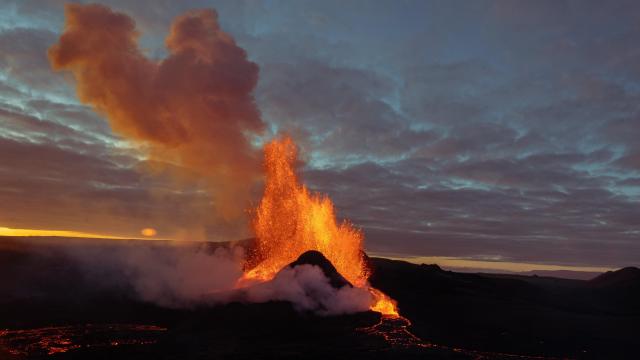An Icelandic volcano sends molten rock into the air. An owl silently snares its prey. The glow from mountain climbers’ headlamps travels miles across the wilderness on a starlit night. Bald eagles spat for a perch amid Alaska’s salmon season.
I can describe the scenes in words, but I promise the photos are better.
These moments and more, captured on camera, have won the recognition of National Geographic in its first annual “Pictures of the Year” contest. The outlet announced the results of the photo competition on Friday, and the selected images are a stunning collection of Earth’s wonders — grand and small.
Out of nearly 5,000 photo submissions taken within the past two years, a panel of NatGeo’s editors selected one grand prize winner and nine additional honorable mentions. Though the magazine has many different photo contests, 2022 was the inaugural year of the outlet’s Pictures of the Year, a competition specifically for aspiring photographers to showcase their skills in four different categories: nature, people, places, and animals.
Click through to see some of Gizmodo’s favourite shots and the grand prize-winning photo.
To see the full gallery of winners, visit natgeo.com/PhotoContestWinner.
Fagradalsfjall Volcano Eruption

Volcanic eruptions can undoubtedly cause chaos and devastation — but they can also be stunning. Eruptions serve as a reminder of our planet’s power and the underlying geological processes driving Earth’s ongoing evolution.
Fagradalsfjall’s recent eruptions in Iceland have drawn in tourists seeking the perfect picture, some at their own peril. But this photograph from Riten Dharia probably tops all of the tourist Instagram posts.
National Geographic writes:
In May 2021, the Fagradalsfjall volcano erupted in the Reykjanes Peninsula in Iceland for the first time in over six thousand years. The lava flow continued for six months, spreading hard black rock across the landscape. It was, says Riten Dharia, who captured this image, “an exhibition of the raw and awesome power of nature.”
Owl Capturing Prey
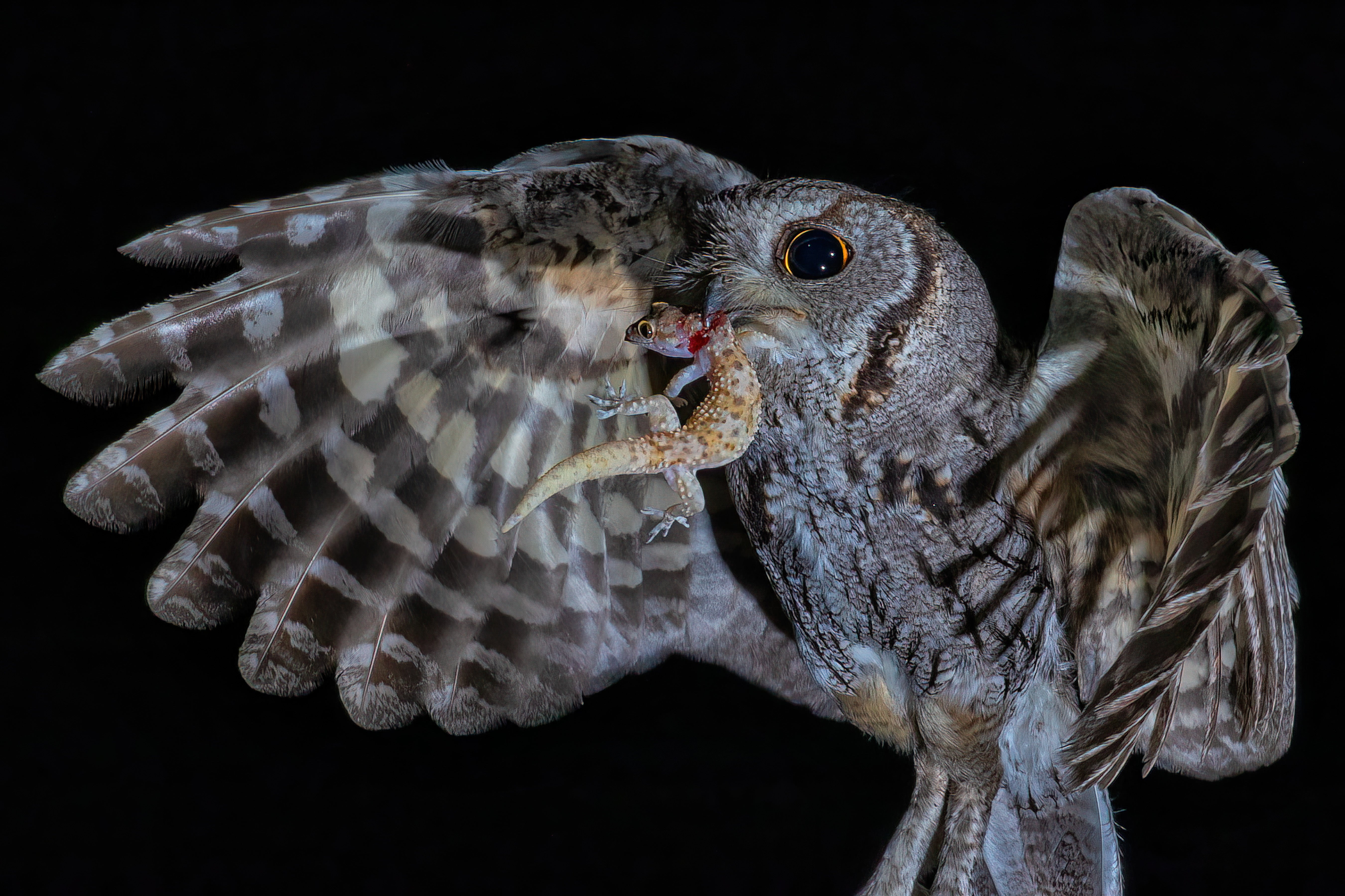
Owls are notoriously stealthy hunters. Here, an Arizona screech owl’s silent flight helped it capture a non-native reptilian snack.
National Geographic writes:
Wildlife biologist Bruce Taubert was studying the eating habits of Arizona’s small desert owls when he got lucky: he found a rare screech owl next. For several nights, he photographed the owls carrying food back to their chicks using an infrared trip beam that triggers a high-speed flash. This owl collected a Mediterranean gecko on its nightly run. “Mediterranean geckos are nonnative in Arizona and their distribution is expanding,” Taubert says. His theory on how they got there? “It may be that the geckos were delivered to [nearby] houses by landscape companies bringing in exoticplants.”
San Jose, California Marshes
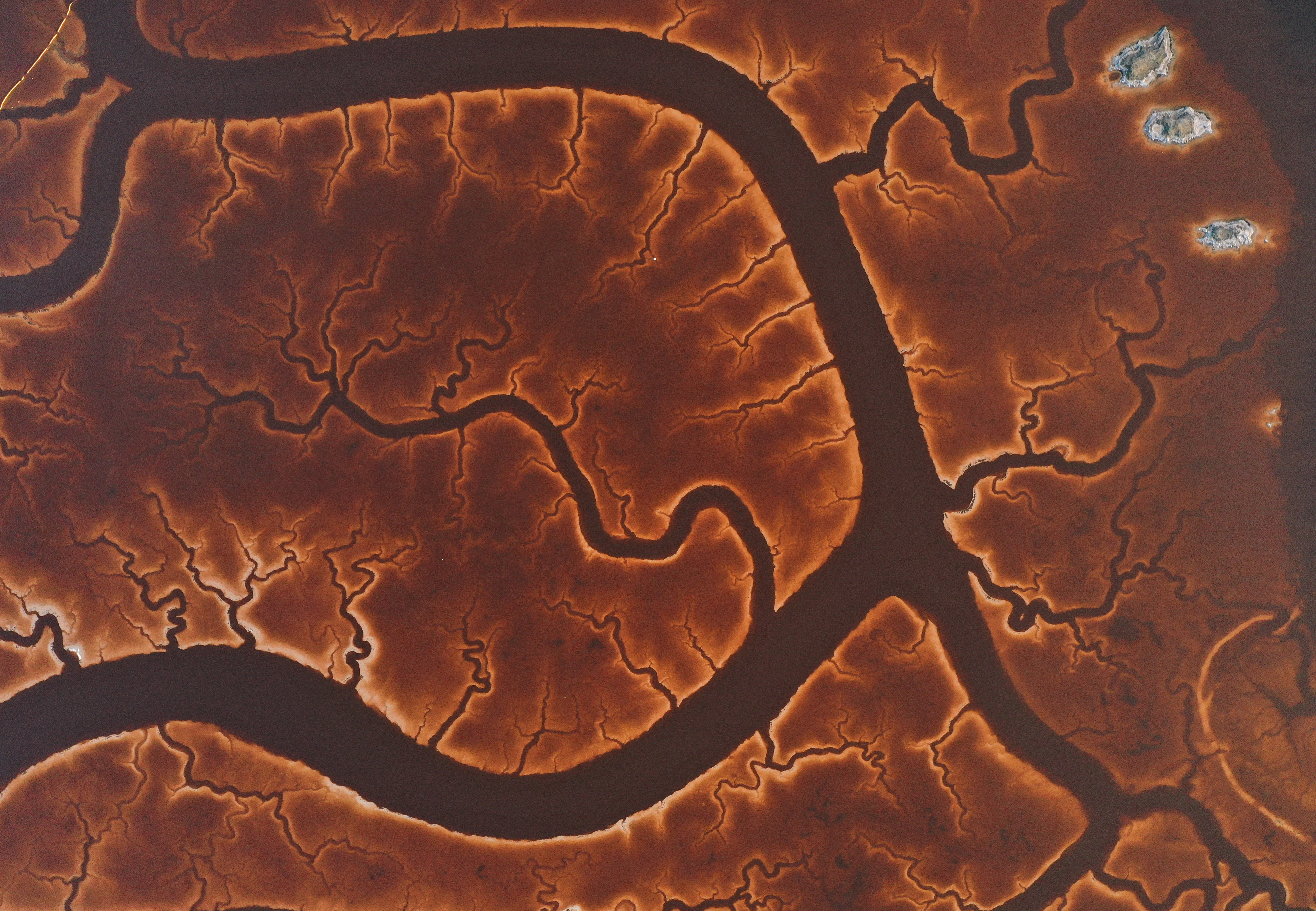
Viewed from above, the inlets and waterways of Alviso Marina County Park in San Jose, California almost resemble blood vessels and capillaries. The visual is an important reminder of the critical ecosystem role that these urban wetlands play in regulating flooding for humans and providing habitat for wildlife.
National Geographic writes:
An aerial view taken by photojournalist Tayfun Coskun shows the salt marsh ponds at Alviso Marina County Park in San Jose, California. These unique urban marshlands are being threatened by rising sea levels, and conservation projects are racing to turnback time and restore the region for wildlife and fish — and also for absorbing floodwaters and capturing carbon dioxide.
King Penguins
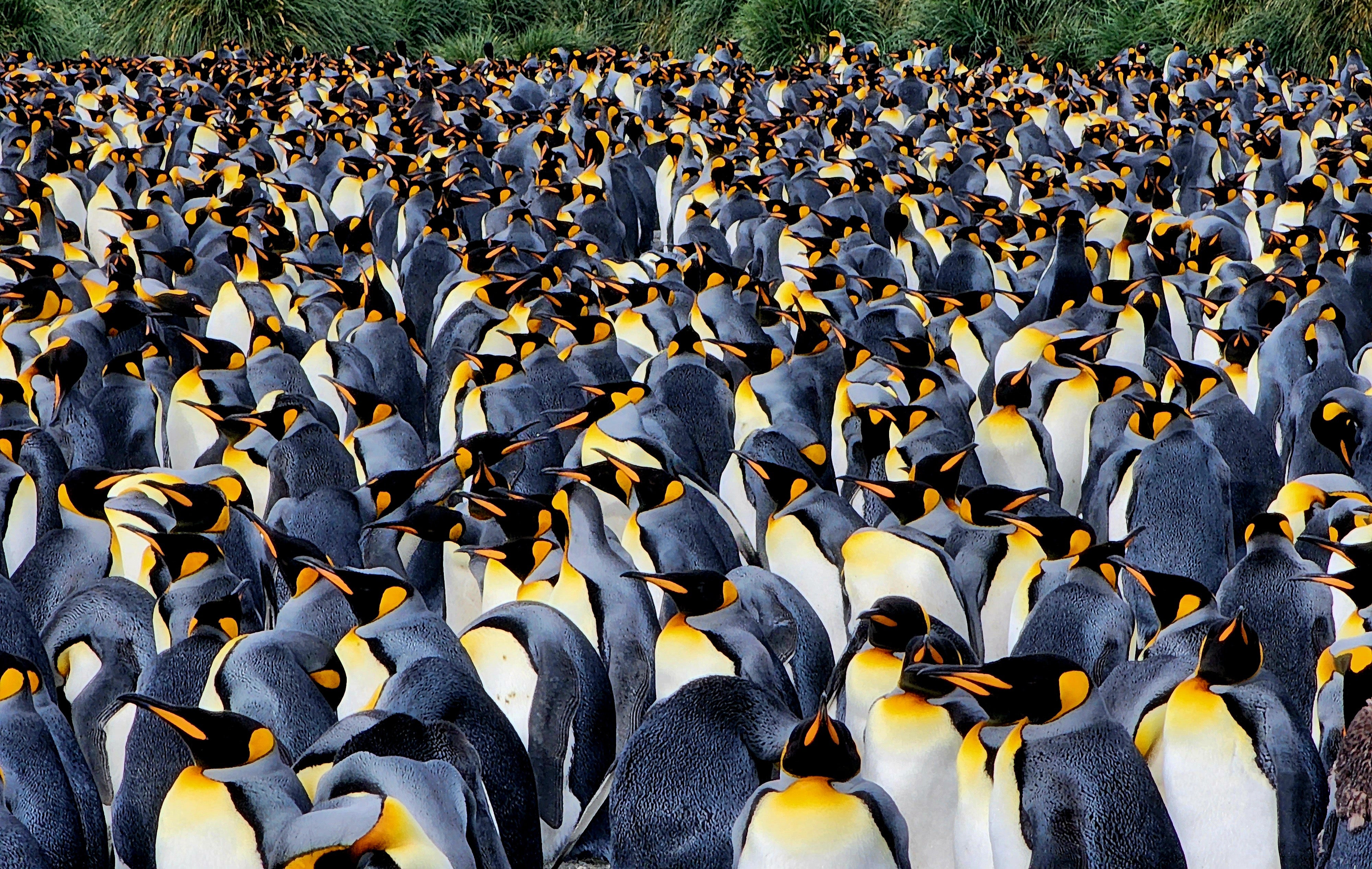
King penguins, the closest cousins of emperor penguins, cluster together on a remote island between Argentina and Antarctica. Though in this image the flightless birds seem numerous, climate change and other human impacts pose an existential threat to king penguins’ survival. At least one study has predicted most of the species’ colonies could vanish by the end of the century.
National Geographic writes:
King penguins crowd together in the viewfinder of Rhez Solano on the beaches of Gold Harbour in South Georgia. The island sits in the remote southern Atlantic Ocean, not far from Antarctica, and hosts some 25,000 breeding pairs of king penguins, along with gentoo penguins, and elephant seals.
Mount Ranier at Night

Both stars and climbers’ headlamps shine bright in this photo of Washington’s Mount Rainier. It’s a beautiful picture but also a stark reminder of peoples’ proverbial footprint — even in the most remote locations.
National Geographic writes:
Sometimes a sleepless night is key to great photography. At approximately 3:40 a.m. on a frigid summer morning, photographer W. Kent Williamson snapped this image from Tipsoo Lake in Mount Rainier National Park, Washington. From across the still water, he could see a line of headlights as weary climbers approached the peak’s 4,392.47 m summit — the culmination of a multi-day climb. “The night sky was unusually clear, and the Milky Way could be seen just above the mountain, ”Williamson says. “I was surprised to see how bright the climbers’ lanterns were.”
Kazakh Eagle Hunter
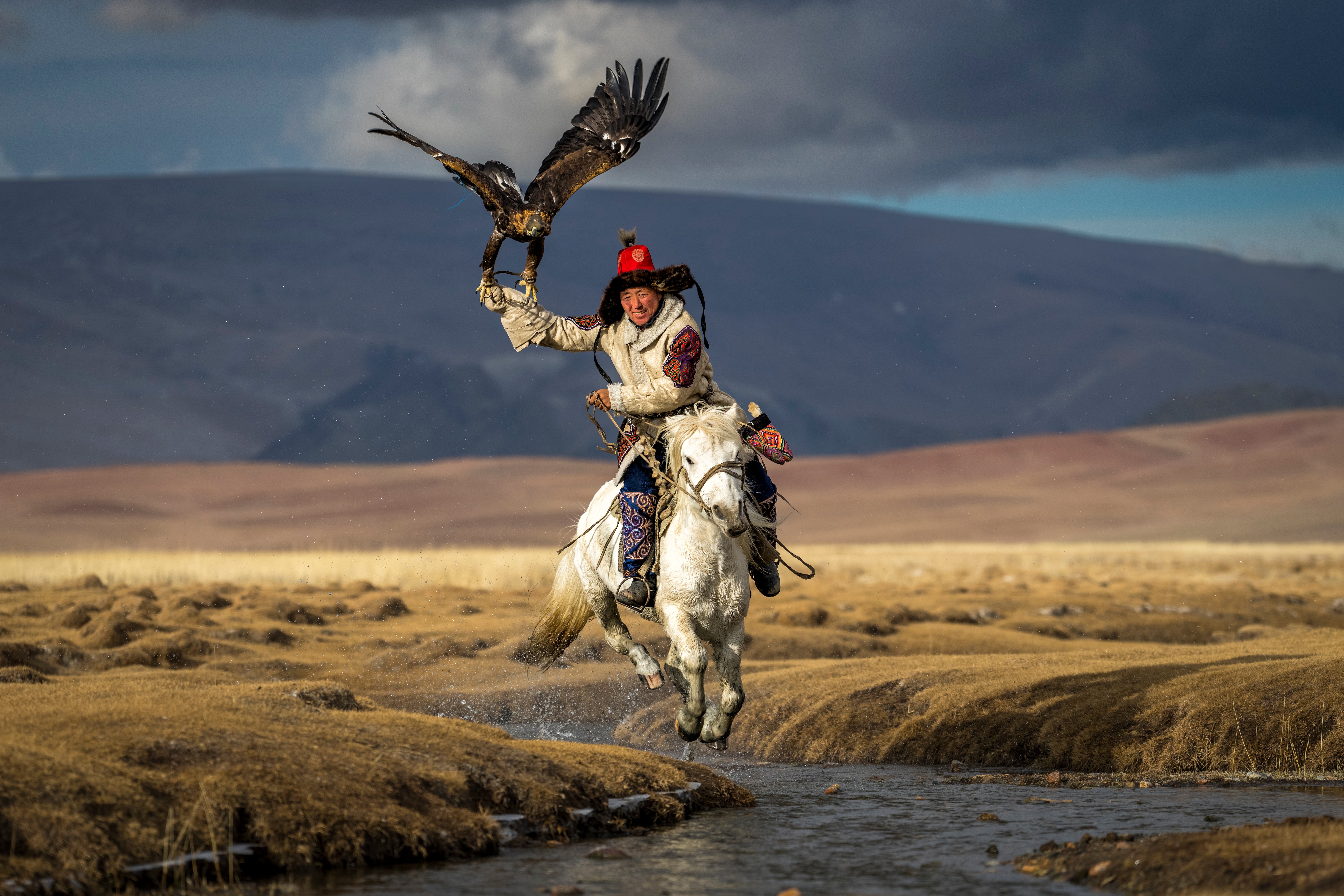
Not every interaction between people and nature is necessarily detrimental. This dynamic photo shows a partnership between a Kazakh hunter in Mongolia and a golden eagle. Hunting with eagles is a traditional method in the region that’s been employed for thousands of years.
National Geographic writes:
Asiilbek, a nomadic Kazakh eagle hunter, preps his golden eagle, Burged, for a horseback hunt in the grasslands outside of Bayan-Ölgii, the westernmost province of Mongolia. The eagle’s training begins when fledglings are captured from their cliff edge nests and taught how to hunt for hare, fox, and even deer. The tradition stretches back 3,000 years.
“For this image, I was lying on my stomach in the prone position looking through the electronic viewfinder at the edge of the stream,” says photographer Eric Esterle.“The ground shook as Asiilbek’s horse passed less than a few feet away, splashing me with ice cold water. I remember covering my camera with my body and putting myhead down.”
Blue Ridge Mountains
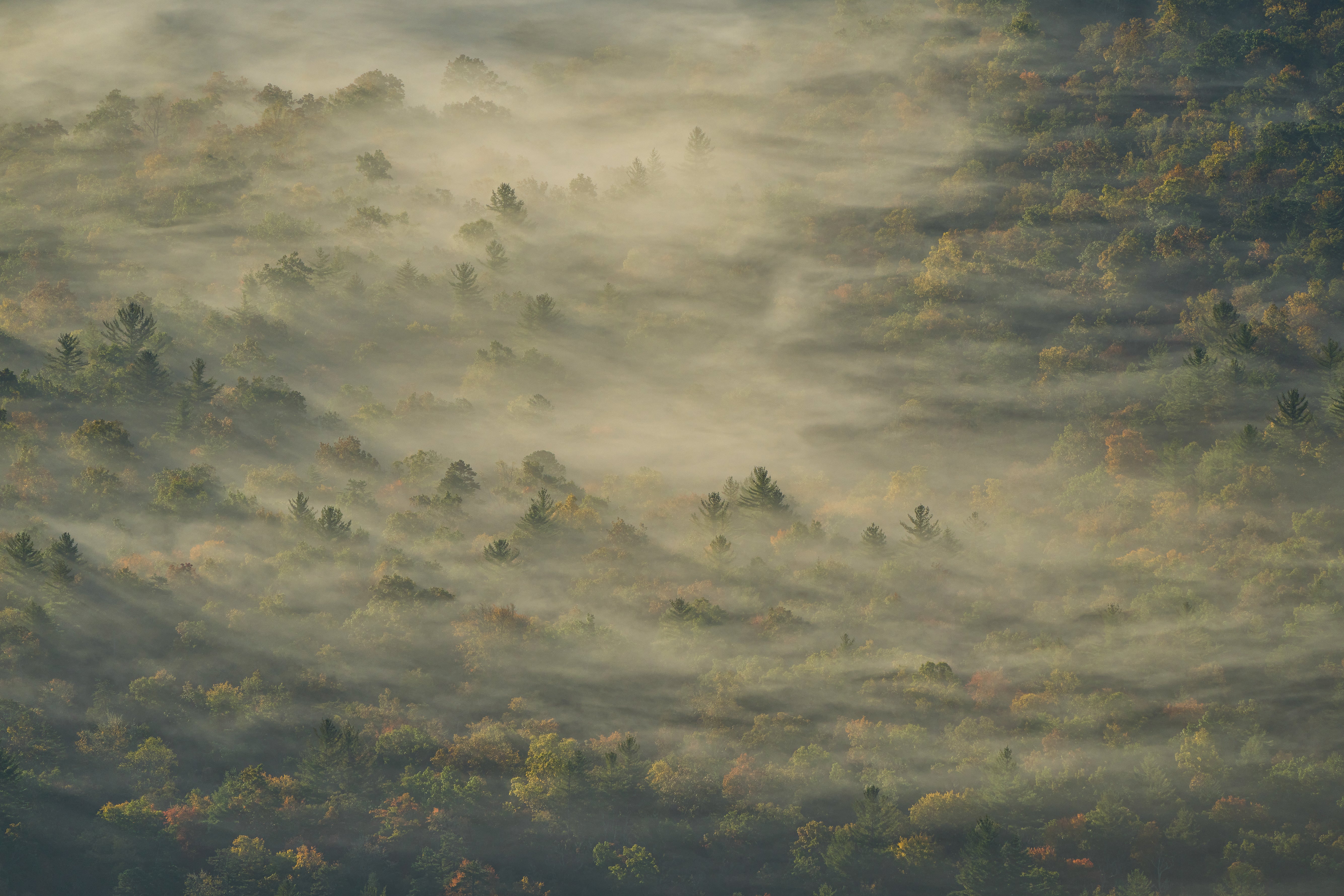
This misty morning in North Carolina’s Blue Ridge Mountains looks more like a painting than a photo.
National Geographic writes:
Heading home from an airport run one early October morning, photographer Tihomir Trichkov cut through North Carolina’s Blue Ridge Parkway and spotted the sun rising gently over the valley. It was blanketed in a thick fog, with the fall colours popping out underneath. He zoomed a long lens into the scene and captured this. “I was staring at a whispering mystery, creating impressionism with a camera,” Trichkov says. “It had rained the day before; there was a ton of moisture in the air. I named it ‘Legends of the Fog’ as I hear whispers when I stare at it.”
The Grand Prize-Winning Photo
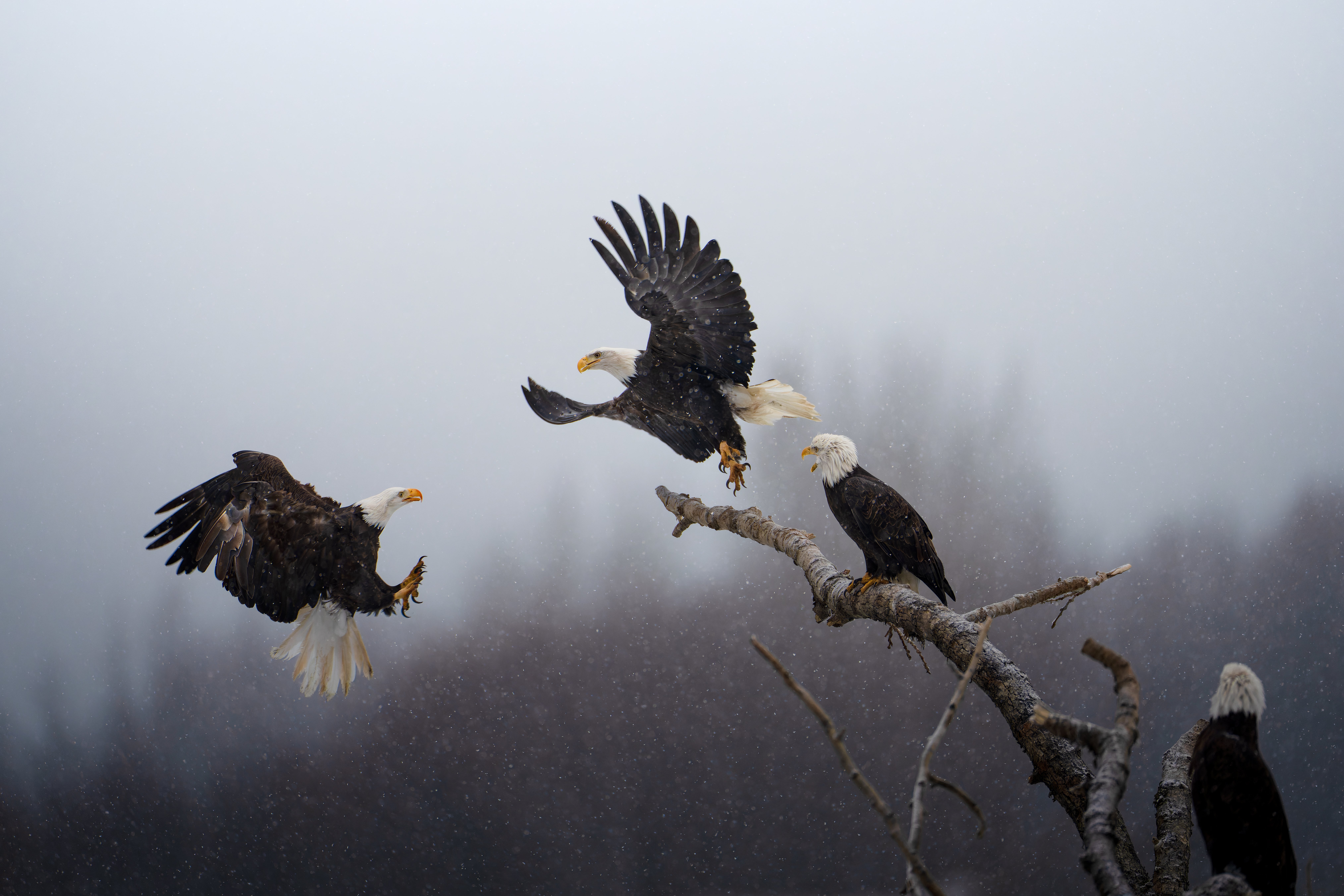
Drumroll please… The winner is fighting bald eagles.
When meals are plentiful during Alaska’s salmon season, perches become scarce — as demonstrated by this intense display of territorial defence.
National Geographic writes:
A bald eagle arrives to steal a perch on a tree log that offers a strategic view of the shoreline at the Chilkat Bald Eagle Preserve in Alaska. When other eagles drag freshly caught salmon in from the water, these bystanders swoop in to take a share. “Hours of observing their patterns and behaviour helped me capture moments like these,” says photographer Karthik Subramaniam, a software engineer with a passion for wildlife photography.
